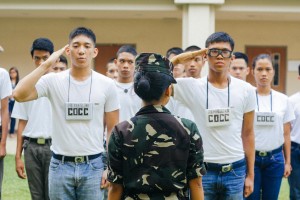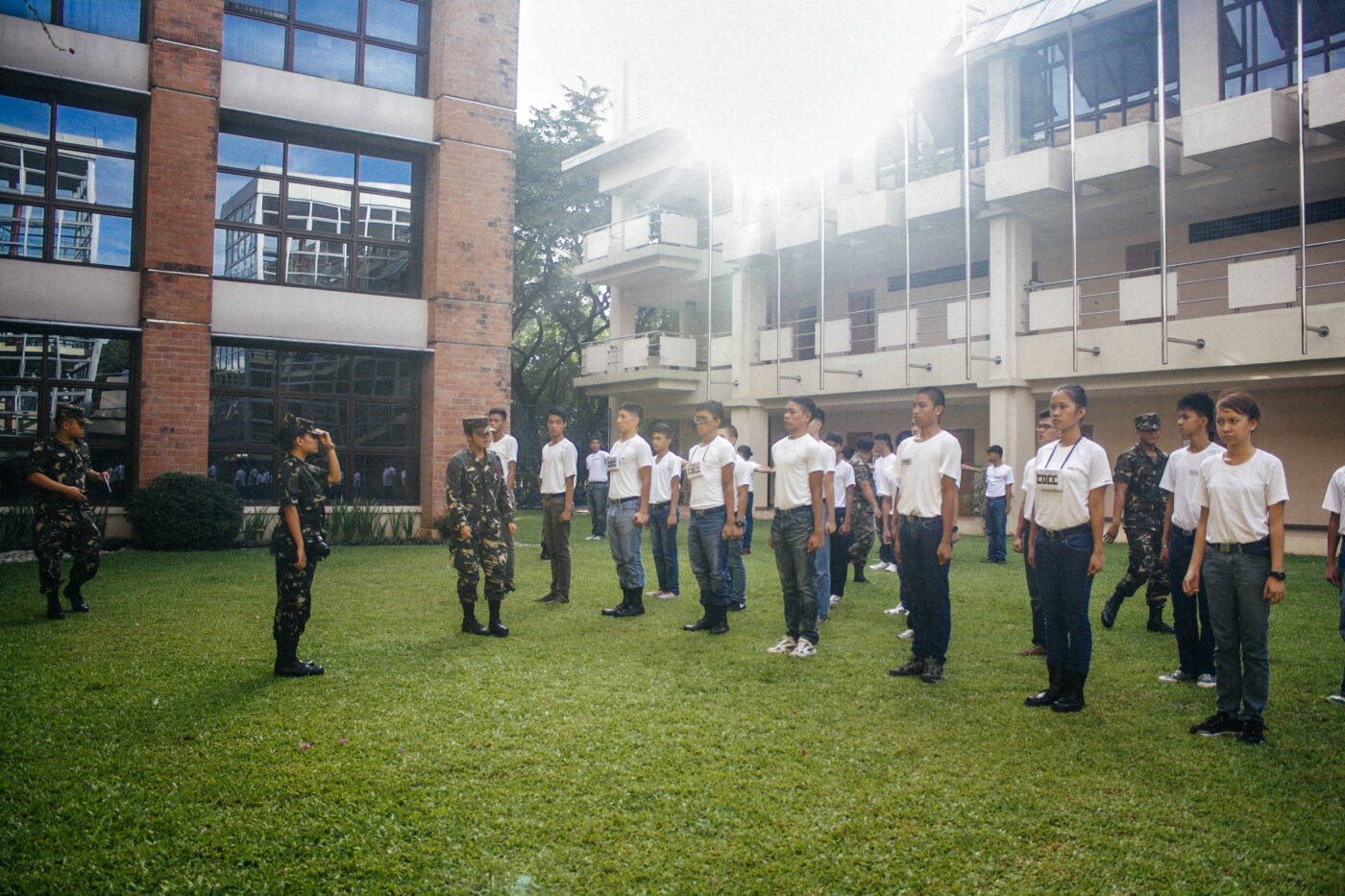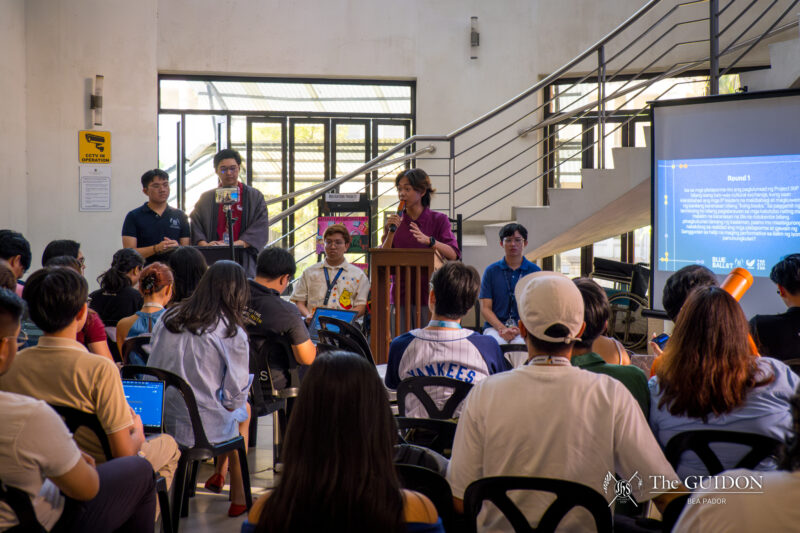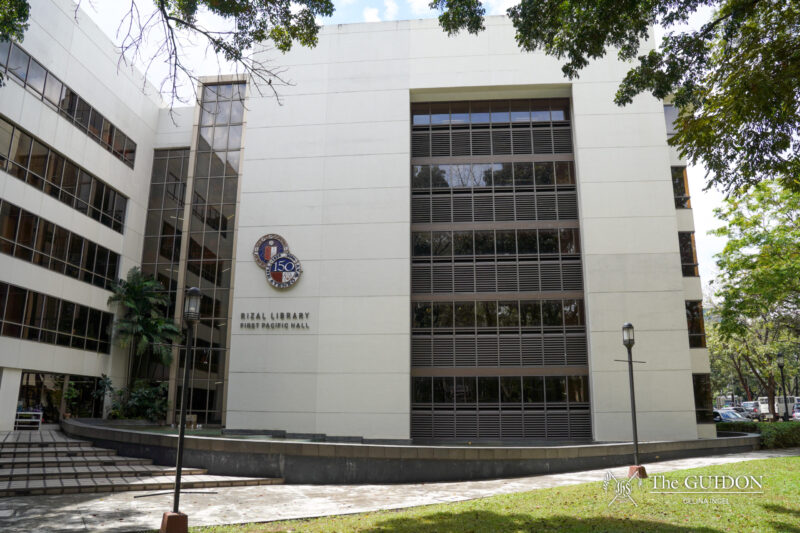The Reserved Officers’ Training Corps (ROTC) was faced with a smaller pool of potential recruits this school year as 34 courses were pre-enlisted for the discipline-based National Service and Training Program-Preparatory Leadership Undertaking for Sophomores (NSTP-Plus).
Headquarters and Headquarters Company Commander (HQHQ) Timothy Racho said that it was difficult for the ROTC program to gain cadets because more students were already assigned to NSTP-Plus.
“ROTC isn’t really a popular choice to begin with, and already, there are [students enrolled in] 34 courses who think that they are forced to stay in [NSTP-Plus],” he said.
He explained that there is a negative stigma attached to ROTC because of the misconceptions on military training. Racho said some students think, “I’m not buff enough” or “May power-tripping ‘yan (There’s power-tripping in ROTC).”
Racho added that pre-enlisted students would either think filing for load revision out of a discipline-based NSTP-Plus is not an option or find manual registration “a hassle.”
During the initial online enlistment and manual registration, only five students opted for ROTC.
In an interview with The GUIDON, the ROTC officer also brought up the concern that the NSTP-Plus pre-enlistment overrules the NSTP Act of 2001, which states that students have the right to choose which NSTP component to take.
The NSTP Act of 2001 or Republic Act No. 9163 mandates that tertiary students undergo any of the three NSTP components for one school year: Civic Welfare Training Service (CWTS), Literary Training Service (LTS) and ROTC.
The first two components constitute NSTP-Plus and is implemented under the Office of Social Concern and Involvement (OSCI).
ROTC, on the other hand, receives instructions from both the Philippine Air Force Air Reserve Center and the school administration.
ROTC was moved from under the supervision of the Office of the Associate Dean for Academic Affairs to the Office of the Associate Dean for Student Affairs (ADSA) this school year.
On disciplines
More courses were pre-enlisted for NSTP-Plus this school year due to the emphasis placed on its discipline-based aspect.
Discipline-based NSTP-Plus aligns its activities with the students’ respective degree programs, said Program Coordinator for NSTP and Junior Engagement Program Ophalle Alzona-Pornela.

MILITARY TRAINING. San Andres said that ROTC offers the physical development option that the INAF Program lacks. (Photo by Alexandra L. Huang)
Pornela said that the INAF team is working on the premise that students, based on a consultation done with the Sanggunian in 2012, want formation programs that are related to their disciplines.
The INAF team handles the INAF program which aims to develop the personal, academic, socio-cultural and spiritual dimensions of each student.
The INAF program itself is overseen by the Office of the ADSA and involves OSCI, the Office of Campus Ministry, the Office of Guidance and Counseling, the Office of Placement and Career Services, and the Office of Student Activities.
She said that a goal of discipline-based formation is to make activities become more relevant for students.
ADSA Rene San Andres said that a discipline-based approach is in line with the university’s thrust on nation-building, which aims to bridge the academic world with Philippine reality.
Displacement
According to HQHQ Commander Racho, ROTC was not “administratively” represented during the talks between OSCI and the INAF team regarding the pre-enlistment system.
He mentioned that ROTC Coordinator Richard Gialogo was only appointed to position last June, during which time the pre-enlistment was already underway.
Pornela said since ROTC was only moved under the ADSA’s wing this summer, the departments “weren’t as conscious with the effects of the [NSTP-Plus] pre-enlistment [on ROTC].”
While there is a trend in pre-enlisting courses for NSTP-Plus, ROTC has never been pre-enlisted for students.
“[ROTC is not pre-enlisted] because they have been left out of the picture. That’s the most simple reason,” said San Andres.
He explained that if you look at the core of the NSTP Act of 2001, it compels universities to expose their students to a program that helps develop a sense of service and patriotism.
San Andres noted that long before “NSTP became NSTP,” there have already been social formation programs in the Ateneo similar to the CWTS and LTS components.
He said that when the NSTP law was mandated, the Ateneo “decided not to get rid of ROTC because it performs a function [in formation].”
He said that being on the reserved force allows a student to respond to the call to fight and die for one’s country—one of the highest forms of service.
However, San Andres stressed that ROTC, along with the Physical Education program, delivers the physical component for student formation which is not under the INAF program.
Addressing concerns
San Andres explained that NSTP-Plus pre-enlistment does not hinder the freedom of students to choose which component of NSTP to take.
He said that students who have been pre-enlisted in NSTP-Plus could always opt to file for load revision if they want to take ROTC.
However, students find the load revision process quite tedious. After securing a load revision form which entails lining up at the Cashier to pay the required Php 15, students also have to obtain the signatures of various school administrators.
San Andres said his office assisted the ROTC officers with enlistment by extending the load revision deadline from June 21 to July 5 for students who wished to transfer from NSTP-Plus to ROTC. The load revision fee was also lifted.
The ROTC officers initiated an information drive to ensure that the sophomores are aware of the load revision option.
At present, 40 cadets have been enlisted in ROTC.
According to Racho, the ROTC officers are now discussing plans with the administration to iron out enlistment systems for next year.







